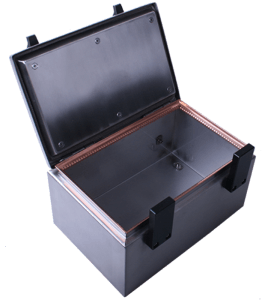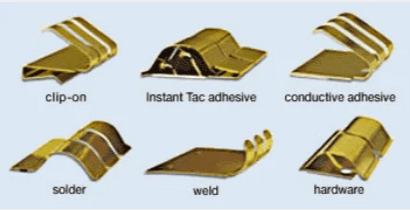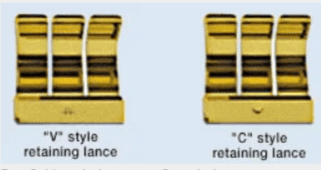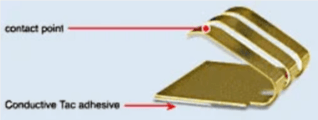JHSC Home / Products / Holland Shielding Home / Beryllium-Copper(BECU) Fingerstrips
Fingerstrip gaskets and metal grounding products for shielding and grounding. Used in construction where a large spring range is required and the contact frequently is being pressed and released.
Our range of beryllium-copper fingerstrips and contact strips provides cost-effective long-term EMI/RFI shielding, without any risk of degradation as a result of repeated opening and closing of the enclosure, or of bending of the beryllium-copper fingers. The Be/Cu fingerstrip is also referred to as Be/Cu fingerstock.
Modern electronic equipment often requires EMI/RFI shielding and an EMI/RFI-shielding gasket in order to avoid EMI/RFI radiation and to prevent interference from outside sources.
EMI/RFI gaskets that were designed and manufactured utilizing the strengths of beryllium and copper (Be/Cu) are the industry standard throughout the world. Starting with the emergence of RFI/EMI problems in the early days of military electronics, Be/Cu EMI/RFI shielding gaskets have been the solution of choice.
Apart from beryllium-copper, we also offer shielding and custom-engineered stamping in stainless steel, brass, phosphor bronze and other special alloys.
Example of a shielded box with a hatch and housing construction
Fingerstrips are often used in construction where a large spring range is required and the contact frequently is being pressed and released. Fingerstrips are in fact not very susceptible to wear.
Fingerstrips are widely used to make a good contact between hatch and housing or door and Faraday cage. An example of a shielded box with a hatch and housing construction is being displayed on the right.

Example of a shielded box with a hatch and housing construction
The Be/Cu fingerstrips are available in a variety of surface finishes, with or without tape or conductive tape. These Be/Cu fingerstrips can be delivered within 5-10 working days.

Determine the correct size of the mounting area (See Figure 1.)
Each shielding gasket is compressed to a certain distance, depending on the design. A positive contact force can usually be assured when the gaskets are compressed up to 25% of their relaxed height or more.
Many of our gasket designs depend on the active contact surface (top) being engaged at, or behind, the cross-sectional centre line. To assure the proper angle of engagement, the guidelines below should be followed for best results.
Most clip-on styles are available with retaining lances which enhance the spring grip onto the mounting surface.
Our shielding designs incorporate two types of adhesive tape on many of the gaskets.
Application: for areas where the two opposing surfaces can be connected by contacting at least one point of the shielding gasket’s profile on each surface.
Temperature range: -50 °F (-46 °C ) to +300 °F (+149 °C)
Application: for areas where the two opposing surfaces can be connected by contacting one point of the shielding gasket’s profile on one side and Conductive tac on the other.
Temperature range: -50°F (-46 °C ) to +300 °F (+149 °C)

Fig. 1. Determine the correct width of the mounting area

Fig. 2. Attachment methods

Fig. 3. V-style lance vs. C-style lance

Fig. 4.

Fig. 5.
